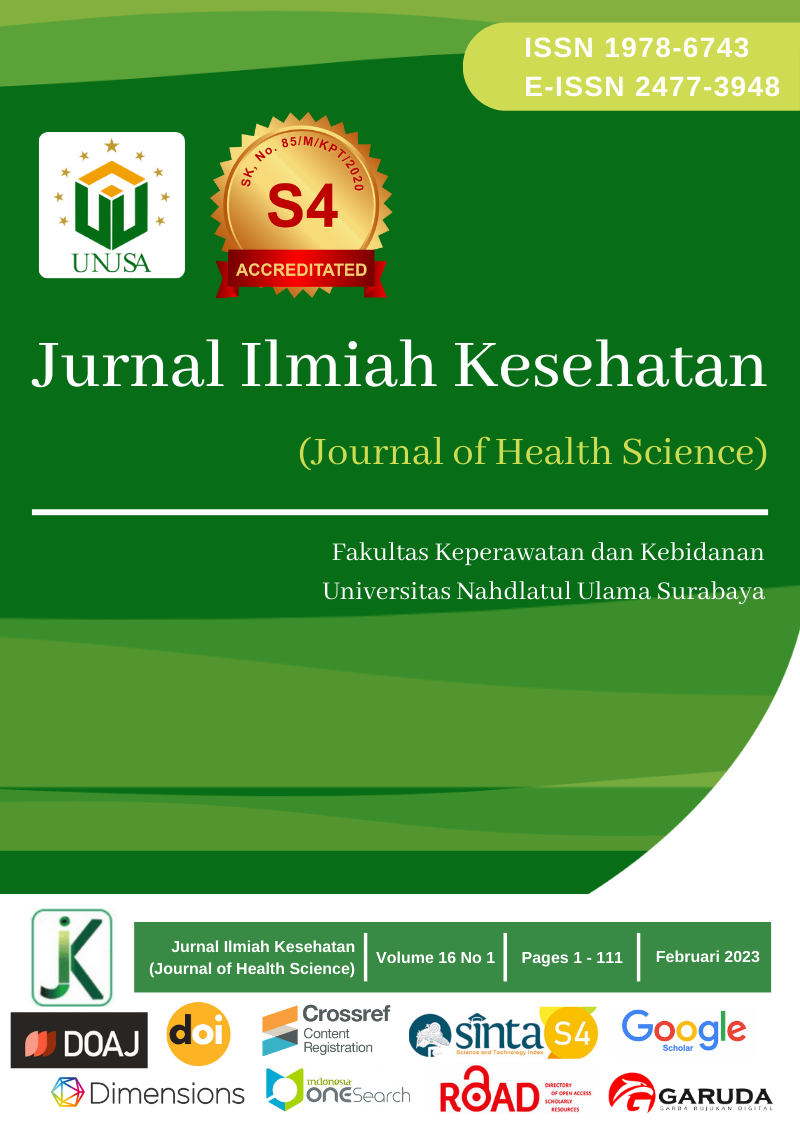Enhanced Recovery After Caesarean Delivery: A Narrative Review
Main Article Content
Abstract
Enhanced recovery after surgery (ERAS) is a philosophy of perioperative care that has been used in other fields since the 1990s but has only recently been applied to obstetric care in the form of Enhanced Recovery After Caesarean Delivery (ERACS). This review highlights perioperative care in ERACS, ERACS guidelines, and the benefits of ERACS. ERACS is a multimodal-based perioperative management protocol to recover the patient's condition immediately. It maintains preoperative organ function and reduces stress response during surgery. The primary keys in this protocol include preoperative counseling, optimization of nutrition, use of standard anesthetic and multimodal analgesia drugs, and early mobilization. The protocol covers perioperative care, from preoperative, intraoperative and postoperative. It involves a multidisciplinary team of anesthesiologists, surgeons, nurses, and nutritionists. The ERACS has many benefits, including shortening the duration of hospitalization, decreasing anxiety and stress, reducing the risk of postoperative infection, and accelerating the body's recovery. In addition, there are faster functional recovery, minimal complications, and a shorter length of stay. It can also improve patient care quality and reduce opioid exposure and dependence. ERACS aims to provide a comfortable patient experience by accelerating the process of patient care and recovery by prioritizing patient safety. However, the obstacle is consistency in carrying out the ERACS protocol in each related service unit, such as polyclinic, operating rooms, and treatment rooms, to implement each protocol comprehensively and optimally.
Downloads
Article Details
Copyright (c) 2023 intan Nurhayati, Mardiati Nadjib

This work is licensed under a Creative Commons Attribution-ShareAlike 4.0 International License.
References
Bowden, S. J. (2019). Fast-track pathway for elective caesarean section: A quality improvement initiative to promote day 1 discharge. BMJ Open Quality, 8(2), 1–9. https://doi.org/10.1136/bmjoq-2018- 000465. DOI: https://doi.org/10.1136/bmjoq-2018-000465
Budhi Setianto , Agus Aan Adriansyah, Umi Hanik, D. N. B. (2021). The Correlation Between Patient Satisfaction Regarding Nutrition Service And Hospital Length Of Stay With Food Waste In Covid– 19 Patients. Journal of Health Sciences, 14(2), 147–152. https://doi.org/https://doi.org/10.33086/jhs.v14i2.2045 147 DOI: https://doi.org/10.33086/jhs.v14i02.2045
Fajriani, F. (2016). Analisis Hubungan antara Pengetahuan, Psikologi dan Pengalaman bersalin Ibu dengan Pemilihan Proses Persalinan Normal atau Caesarea Pada Pasien Melahirkan di RSIA Hermina Ciputat’. Jurnal Kedokteran Dan Kesehatan, 12(2), 2001–2002.
Habib, A. S., & Ituk U. (2018). Enhanced recovery after cesarean delivery [version 1; referees: 2 approved. F1000Research, 7(0), 1–11. https://doi.org/10.12688/f1000research.13895.1. DOI: https://doi.org/10.12688/f1000research.13895.1
Kurniawaty, J., & Anindita, M. P. (2018). Manajemen Preoperatif Pada Protokol Enhanced. Jurnal Komplikasi Anestesi, 5(2), 61–72.
Liu, Z. Q., Du, W. J., & Yao, S. L. (2020). Enhanced recovery after cesarean delivery: a challenge for anesthesiologists. Chinese Medical Journal, 133(5), 590–596. https://doi.org/10.1097/CM9.0000000000000644. DOI: https://doi.org/10.1097/CM9.0000000000000644
Mullman, L. (2020). Improved Outcomes With an Enhanced Recovery Approach to Cesarean Delivery. Obstetrics and Gynecology, 136(4), 685–691. https://doi.org/10.1097/AOG.0000000000004023. DOI: https://doi.org/10.1097/AOG.0000000000004023
Patel, K., & Zakowski, M. (2021). Enhanced Recovery After Cesarean: Current and Emerging Trends. Current Anesthesiology Reports, 11(2), 136–144. https://doi.org/10.1007/s40140-021-00442-9. DOI: https://doi.org/10.1007/s40140-021-00442-9
Tamang, T. (2021). The successful implementation of the Enhanced Recovery After Surgery (ERAS) program among caesarean deliveries in Bhutan to reduce the postoperative length of hospital stay. BMC Pregnancy and Childbirth, 21(1), 1–7. https://doi.org/10.1186/s12884-021-04105-9. DOI: https://doi.org/10.1186/s12884-021-04105-9
Tika, T. T., Sidharti, L., Himayani, R., & Rahmayani, F. (2022). Metode ERACS Sebagai Program Perioperatif Pasien Operasi Caesar. Jurnal Medika Hutama, 02(01), 402–406.





